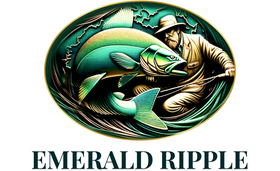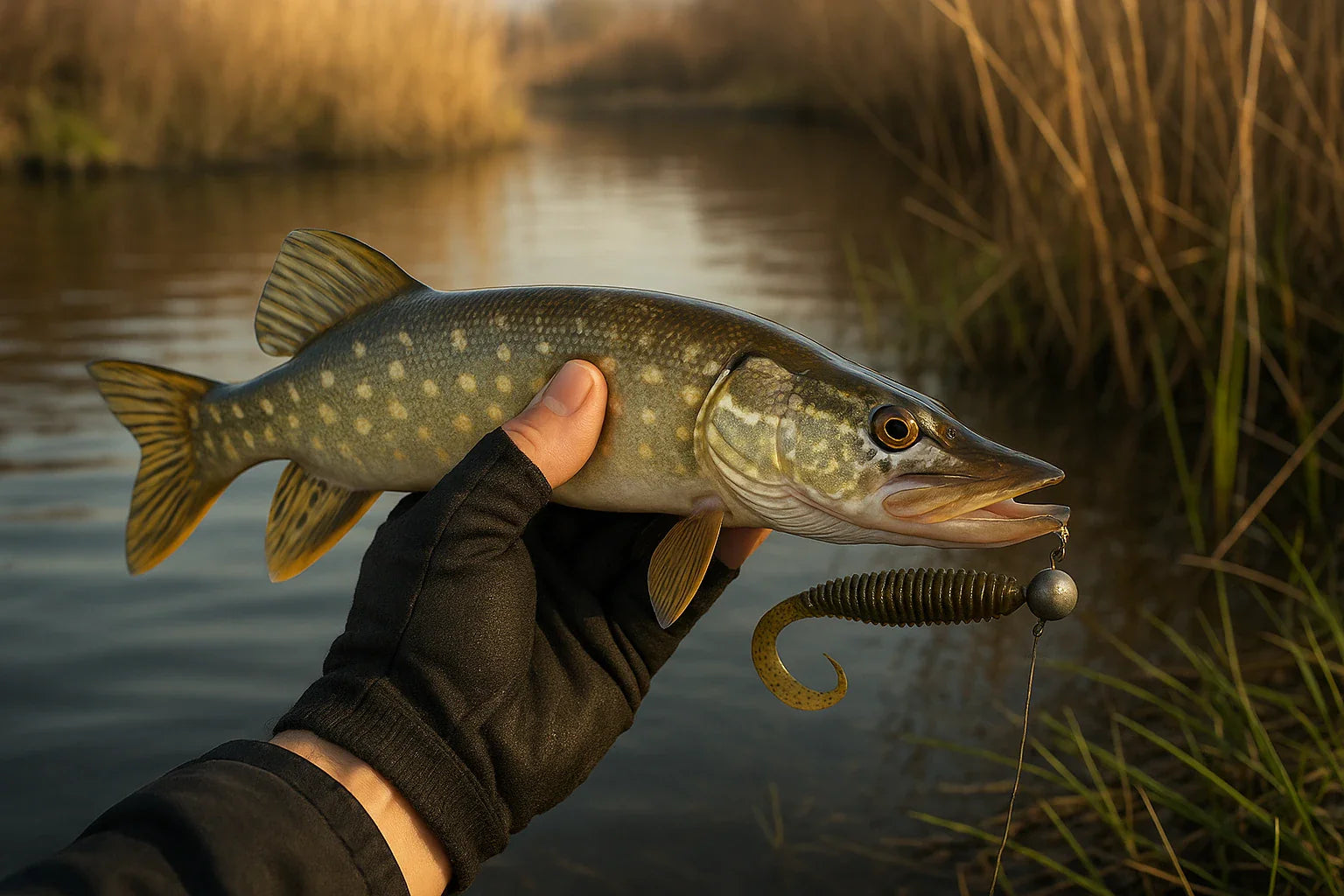Tactics for Catching Passive Pike in Ireland
Today we will look at an effective tactic for catching very passive pike – a method that proves itself both on commercial fisheries and on wild rivers and lakes. We’ll talk about lures, subtle nuances, and types of retrieves, as well as reveal a few competition secrets that are rarely shared openly.
My name is Cormac Doyle, and I’d like to share my personal experience of targeting pike during those moments when it almost completely ignores standard lures and familiar retrieves. This approach has helped me win numerous competitions on commercial waters and consistently brings results on natural venues. I’m confident it will help you too.
Choosing the Right Location
One of the key factors that largely determines success is the choice of location.
On commercial waters, I usually start at close range, trying to pick off active fish right at my feet. The bank often becomes an excellent ambush point for pike. On most pay-to-fish venues, the middle and far distances tend to have flat, featureless bottoms, lacking interesting structures that might hold predators. By contrast, the margins often provide small irregularities and cover that are far more attractive to the fish.
Why the Margins Matter
Along the margins, you can almost always find sections with uneven ground and interesting features. Casting a lure right up against the bank often delivers results quickly – takes rarely take long to follow.
At short range, fish – and pike in particular – tend to hold consistently. They can literally lie in wait for your lure to pass by. By focusing on the margins, you are already increasing your chances of success by around 60 per cent.
Typical Holding Spots for Pike
In most waters, pike hold close to:
- Weed beds
- Fallen trees
- Snags and submerged timber
- Drop-offs and ledges
Typically, they remain motionless in these spots, lying in ambush before suddenly striking at prey.
Understanding Pike Behaviour
Even when a pike isn’t actively feeding, it will often attack simply to defend its territory.
As the saying goes, the key is just to “put it in front of its mouth”.
When pike are inactive, they favour slower, more vulnerable prey. Fast retrieves are usually ignored, while slow, lazy presentations that require little effort are far more likely to trigger a response.
Top 3 Retrieves for Passive Pike
With this in mind, I’d like to share my Top 3 retrieves that can provoke even the most passive pike into striking.
Top 3 Retrieves for Passive Pike
1. Steady Retrieve with Subtle Jerks
After casting the lure, allow it to settle on the bottom before beginning a very slow retrieve, keeping constant contact with the ground. The lure should only just brush along the bottom without digging in.
Every three to four turns of the reel, introduce a light “glitch” – a gentle twitch of the rod tip. These small interruptions add unpredictability to the lure’s action and often provoke even the most passive pike into striking.
More than once I’ve landed fish with their mouths full of silt – proof of just how much this method can irritate them. That’s why I’ll emphasise again: this retrieve must be as slow and deliberate as possible.

2. Three-Stage Retrieve with a Pause
This retrieve is slightly more active and consists of three distinct stages:
- Slow, steady retrieve – the lure moves gently along the bottom, imitating easy prey.
- Double light lift – executed with smooth, wave-like movements of the rod tip to add subtle action.
- Small draw with a pause – after a short pull, allow the lure to pause completely until it drops back to the bottom.
It is during this pause that takes most often occur, as pike perceive the lure as weak and defenceless prey that is easy to catch.

3. Slow Draw Retrieve
The most important element of this retrieve is the very gentle presentation of the lure on a light jig head. Personally, I prefer Keitech jig heads, as they are designed with minimal weight, allowing for delicate and natural animation.
By the way, if you’re interested in how to rig soft plastics quickly and easily, let me know in the comments – I’ll be happy to prepare a separate article on the topic.

My personal favourites are jig heads weighing 0.7–1.2 g. In certain conditions, I even have to go as light as 0.3–0.5 g, performing an ultra-slow animation. This usually starts with a slow, steady retrieve, followed by a smooth drop, and then a very slow draw with the rod tip. Strikes happen around 80 per cent of the time on the draw itself. The slower the presentation, the better – and that’s absolutely crucial when dealing with passive pike.
To achieve maximum suspension of the lure, a thicker fluorocarbon leader can really help. I personally use Golden Catch X-Braid fluorocarbon with a 0.55 mm diameter. It not only reduces bite-offs from both small and large pike, but also slows down the lure thanks to its added drag in the water.
Final Notes on Retrieves
To finish on retrieves, I always bring my lure right to the bank – many of the most unexpected strikes happen at your feet.
And here’s a fun thought: pike are like women – they need a little time to “think about it”. But if she keeps you in the friend zone for too long, it’s better not to waste your energy and simply move to another spot!
Choosing the Right Lure for Passive Pike
Another vital factor is the correct choice of lure. Not every option will work in this style of fishing, so let’s look at this in more detail.
The lure must be capable of performing even on very slow retrieves. Not every model holds its action properly on jig heads of around just one gram.
Of course, you can experiment and find suitable lures yourself through trial and error. However, I’ll share my own personal Top List, which has proved itself time and time again – both in competitions and in everyday fishing.
Top 4 Lures for Passive Pike
1. Keitech Crazy Flapper

A premium craw-style lure with super-action claws that create strong vibrations and lifelike movement. Even on slow retrieves, it activates instantly, attracting pike, zander, and bass.
Its low centre of gravity, durable body, and squid scent make it perfect for Texas rigs, jig heads, or finesse setups. Available in sizes from 2” to 4.4”, the Crazy Flapper is versatile and always effective — a must-have in my tackle box.
2. Keitech Easy Shiner 3"

A superb lure for targeting passive, competition-sized pike. One of its biggest advantages is that it’s among the few paddle tails that start working reliably even at the slowest retrieve speeds.
3. Keitech Swing Impact Fat

Another top-performing lure that has saved me many times in competitions. Compared to the Easy Shiner, it has a larger size and a bulkier body. It also excels when fished with “glitch” retrieves, showing off its rolling action.
4. Select Frick

A bulky curly tail with a long, active tail section. Although this lure only recently found its way into my tackle box, it has already shown outstanding results. Its shape and action make it an excellent trigger for even the most passive pike.
Conclusion
I hope my advice proves useful and brings you plenty of unforgettable strikes and exciting emotions. Take the opportunity to experiment with retrieves and lures – and the pike will certainly reward you with trophy bites.
Further Reading for Beginners
If you are new to predator fishing, you may also find it useful to explore our guide: Pike Fishing in Ireland: Tips for Anglers.
It’s a light, beginner-friendly article that gathers together the essentials – from tackle choice and simple rigs to practical tips on where and how to start. A great starting point for anyone looking to catch their first Irish pike.


